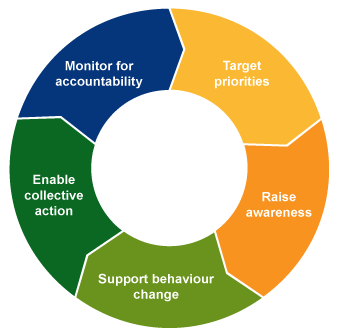1 Making an impact with AMR data
Communicating about AMR is a fundamental part of the Global Action Plan on AMR (IACG, 2018), which sets out five strategic objectives as a blueprint for countries developing a National Action Plan (NAP) for AMR (WHO, 2019a). The first of these strategic objectives is to:
The annual country self-assessment survey commissioned by the Quadripartite – a combination of the World Health Organization (WHO), the Food and Agriculture Organization (FAO), and the World Organisation for Animal Health (WOAH) and the United Nations Environment Programme (UNEP) – reports that 165 countries have developed AMR NAPs, with 121 of those countries implementing their AMR NAPs. Effective communication to empower and enable stakeholder action on AMR is vital to implementing these NAPs successfully (IACG, 2018).
The Interagency Coordination Group (IACG) for AMR proposed five core components to help frame and connect the range of activities needed to make strategic communications an effective tool to address AMR (Figure 1). In this section of the course, we’ll cover some of these core components in more detail.

Figure 1 The five components of communicating AMR (IACG, 2018).
Show description|Hide descriptionA schematic diagram showing the five core components of effective AMR communication as defined by the IACG (target priorities, raise awareness, support behaviour change, enable collective action and monitor for accountability) and the links between them.





